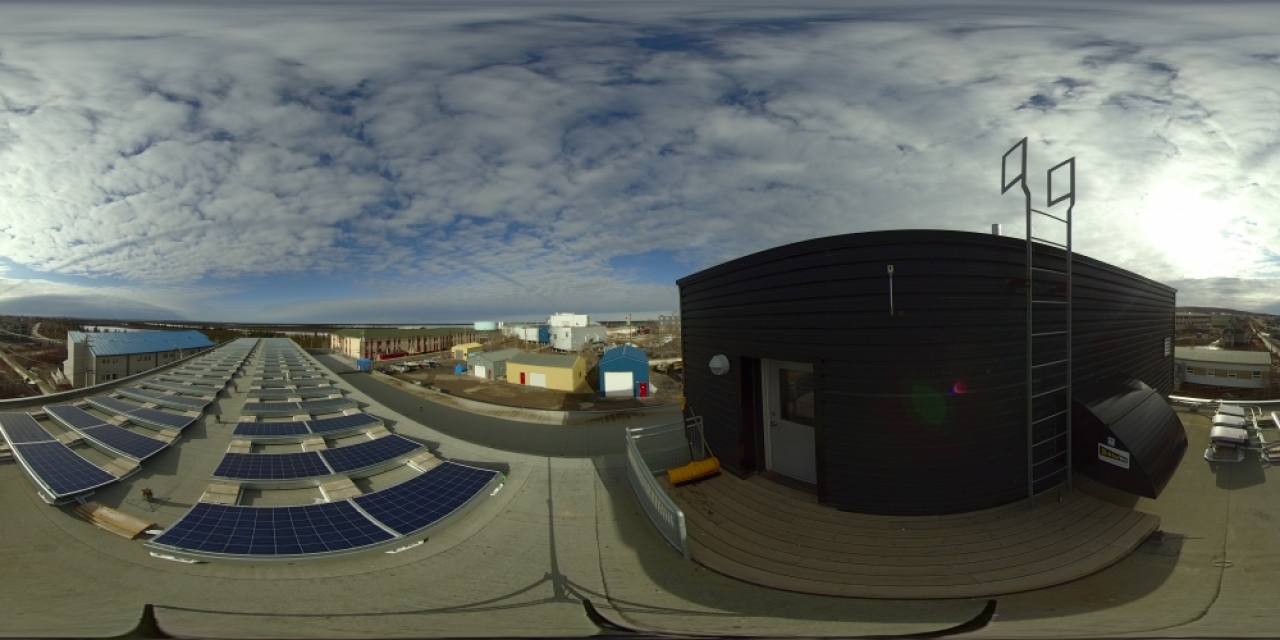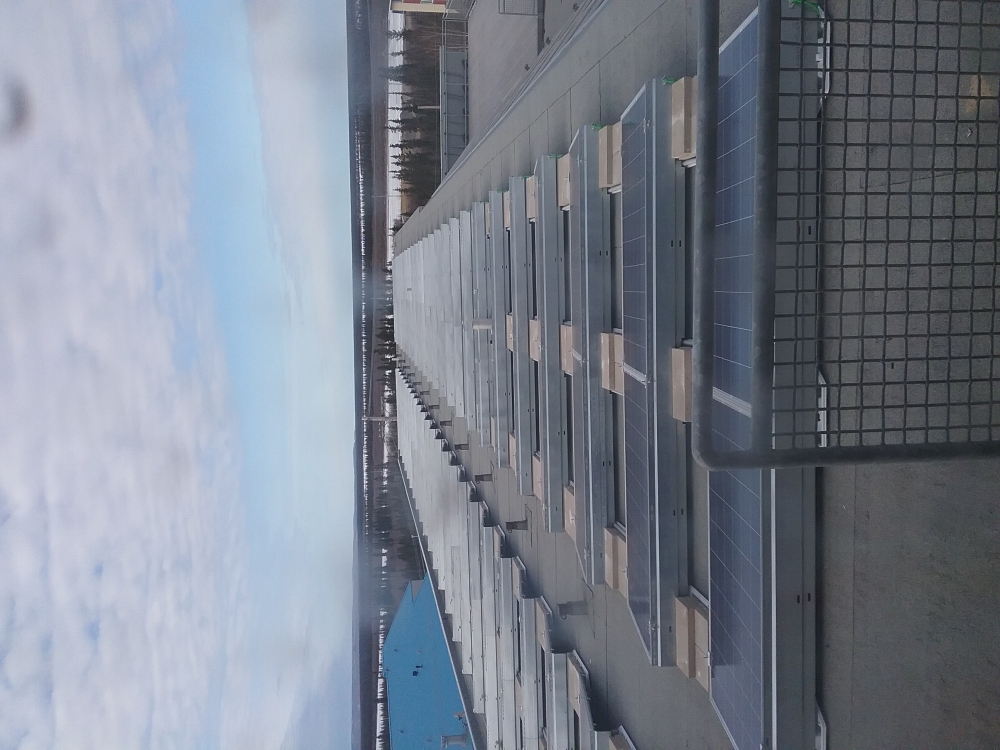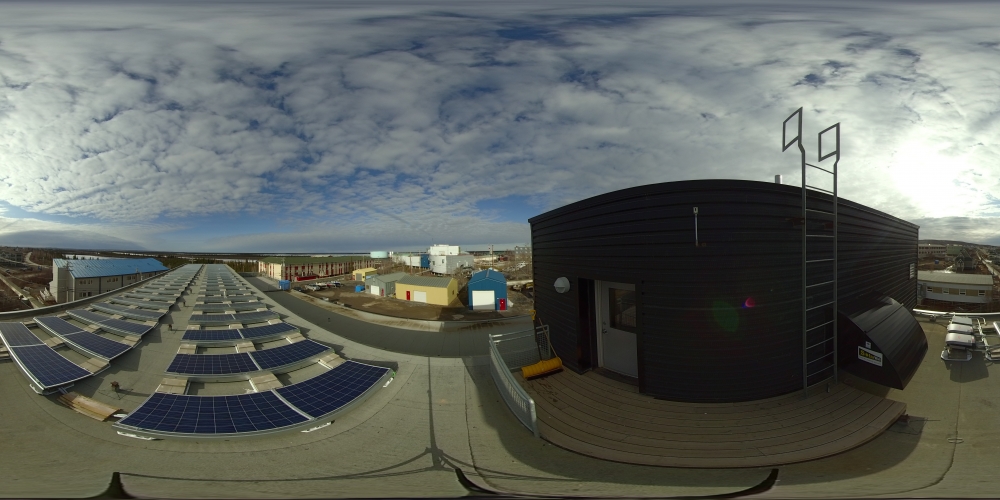
Project Name:
WARC Renewable Energy Demonstration Projects
ARI Team:
Overview:
The Western Arctic Research Centre (WARC) hosts three renewable energy installations. These projects all look to harness the power of the sun to reduce the amount of energy the building needs to get from the grid while also providing data to others interested in seeking similar solutions.
Objectives:
The renewable energy installations at WARC serve two purposes:
- Reduce the energy consumptions of the Western Arctic Research Centre
- Provide data to other interested parties who are seeking similar solutions.
Location:
The Western Arctic Research Centre (WARC) is located in Inuvik, NWT at 68 degrees North and 133 degrees West. WARC houses the headquarters of the Aurora Research Institute as well as being a base of operations for researcher support in the Beaufort Delta.
Installations:
Solar PV – 1.5kW Enphase
The first solar install at WARC was commissioned in 2011. This consisted of five 175 Watt solar panels installed at a 60 degree angle on south edge of the second floor roof. These panels run on micro inverters, meaning each panels works independently to make mains power. If you are interested to see how this system is performing, visit the monitoring site (https://enlighten.enphaseenergy.com/pv/public_systems/XXhz36611/overview ).
Solar PV – 20kW Fronius
Installed in early 2018, the larger PV system installed at WARC is a 20kW array located on the 2nd floor ceiling. This install consists of 96 PV panels installed almost flat to the roof. The panels angle slightly towards the south at an angle of 10 degrees. This system uses two Fronius Inverters, each capable of taking inputs from two sets of panels. This means the 96 panels on the roof are grouped into strings of 24.

A view south over top of the 96 panels installed on top of WARC. The six panels comprising the Enphase system can be seen on the right hand side
SolarWall
The south-facing wall of the third floor of the Western Arctic Research Centre (WARC) is cladded with a solar wall. During April 2013, WARC and ARI collaborated with both Environment and Natural Resources and the Arctic Energy Alliance to install monitoring equipment and software that allows ARI to monitor the energy produced by the WARC solar wall.
A solar wall is a passive heating system that uses a renewable energy source – the sun – to warm the inside of a building. The solar wall itself is a perforated, black metal wall that is installed over the south-facing exterior wall of a building, leaving an 8-inch gap between the exterior and solar walls. The air in the gap is warmed by the sun’s rays before being brought into the building by ventilation fans. The warmed air is then circulated throughout the building by the ventilation system and heating ducts. In turn, this pulls more outdoor air into the gap through the perforations in the solar wall. As long as the sun shines on the solar wall, this process repeats and warmed air is pulled into the building – reducing the need to heat WARC using power generated from non-renewable fossil fuels.

A panoramic view of the solar wall (right) and Fronius PV install (left) on the roof of WARC
External Partners:
Environment and Natural Resources
Keywords:
Solar, Passive, Heating, Wall, PV, Electricity
Updated May 2021
